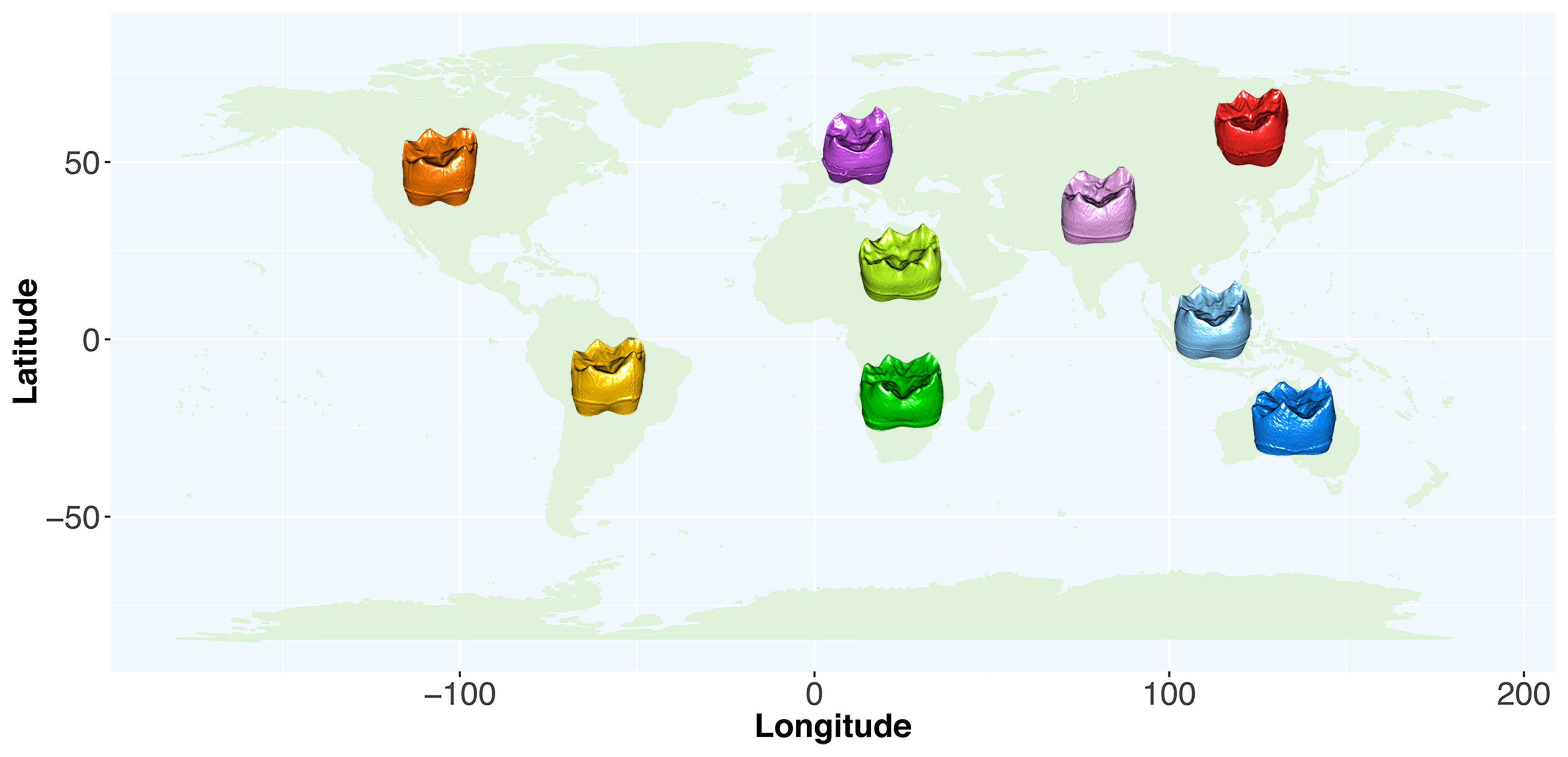Ancient human relationships revealed through teeth
October 5, 2020 – Bellingham, WA – Teeth can tell us a lot of things about our ancestors, and now, new work led by the Primate Evolution Lab at Western Washington University has shown that tooth shape can be used in place of DNA to investigate ancient population movement and genetic relationships in the past. The study, led by Dr. Tesla Monson of the Department of Anthropology at Western, compared DNA and tooth shape using micro-CT scanning technology to look underneath the hard enamel surface of teeth from 161 ancient humans living on every continent except Antarctica.

Micro-CT scanning is an advanced technique for looking at different layers of an object without any physical dissection. Using this method, scientists can take images of teeth and use technology to digitally segment each layer of the tissue until the layer they are interested in is visible. Dr. Monson and her colleagues at the University of Zurich used micro-CT scanning to investigate the enamel-dentine junction, an internal layer of teeth. “What’s really exciting about this work,” says Dr. Monson, “is that we have shown that you can use teeth to answer some of the same questions as DNA, which means that you don’t always have to rely on destructive DNA analyses to investigate human relationships in the past.” Many ancient human remains are extremely delicate and rare, and this study paves the way for investigators to avoid applying destructive processes whenever possible.

Teeth are extremely well preserved in the fossil and archaeological records and have a strong genetic signature, making them prime targets for investigating human origins. The enamel-dentine junction (EDJ) is the part of the tooth underneath the enamel surface – it is thus even more well-preserved, because it does not wear away over time through use, even with a very harsh diet. Hominid fossils, for example, often retain EDJ shape even when the enamel has been completely worn away. The goal of this study was to investigate whether EDJ shape reflects genetic relationships between individuals and can therefore be used in place of DNA. This study is the largest investigation of EDJ morphology to date.
Dr. Monson and colleagues compared the shape of the human EDJ with neutral genetic data, parts of the genome that are not under natural selection. “The correlation between neutral DNA and EDJ shape shows that individuals that are more closely related also have more similar tooth shape,” explains Dr. Monson, “so tooth shape can be used to reconstruct genetic relationships in the past. This means we can know more about how closely related fossil individuals were just by looking at their teeth. And we can track peoples’ historical migration around the globe from their tooth shape alone. This is just another example of how much teeth can tell us about human evolution.”
More about the study: The full study was published October 5, 2020 in Proceedings of the National Academy of Sciences and is titled, “Neutral evolution of human enamel-dentine junction morphology.” Contact the author to request a pdf copy of the research article. This study was funded by the Swiss National Science Foundation. For more information, contact tesla.monson@wwu.edu
